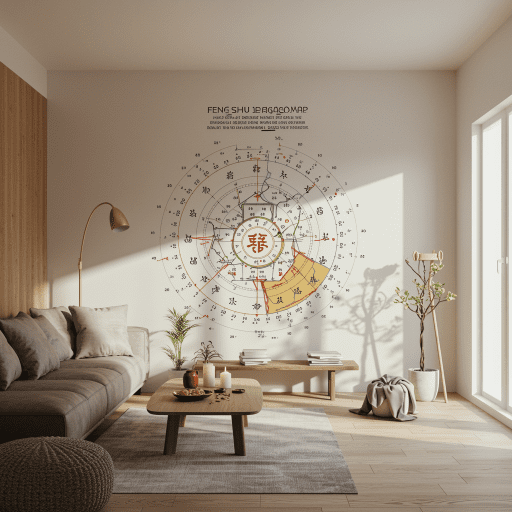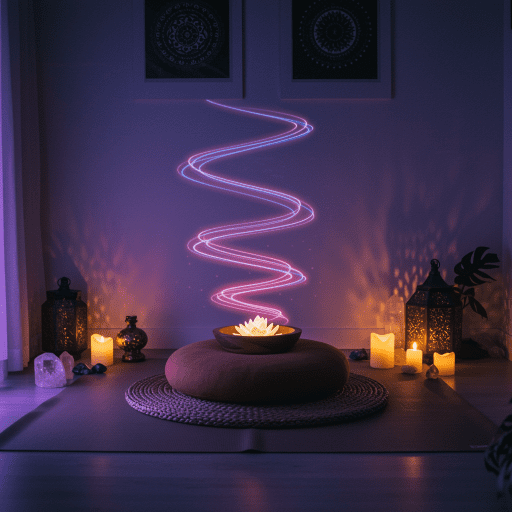Qi Energy at Home: Cultivating Positive Energy for a Balanced Life
What is Qi Energy in Your Home? Understanding the Flow of Vital Force
In traditional Chinese culture, Qi (Chi) symbolizes the vital energy that flows through all living things, including your home. Just as balanced Qi supports physical and mental well-being in our bodies, it also shapes the atmosphere and energy of your living space. A home infused with harmonious Qi fosters comfort, creativity, and overall well-being, while stagnant or blocked Qi can result in stress, fatigue, and disharmony. By incorporating principles from Feng Shui , you can enhance the flow of Qi in your home, transforming it into a sanctuary of positivity and vitality.
At its essence, Qi energy in the home is central to the practice of Feng Shui. The fundamental goal of Feng Shui is to create balance within your living space so that Chi energy can circulate freely. This is achieved by ensuring a clear pathway for Chi to enter your home and strategically using furniture and decor to guide, block, or redirect the energy as needed. To dive deeper into this transformative practice, explore our comprehensive Feng Shui Guide and unlock the secrets to cultivating balanced energy in your home.

The History of Qi Energy in Homes: Ancient Wisdom for Modern Living
The concept of Qi has been integral to Chinese philosophy for thousands of years, particularly when designing spaces that support human well-being. Ancient texts like the Book of Changes emphasized the importance of aligning homes with natural forces to enhance Qi flow. Over time, these ideas evolved into Feng Shui , which translates to "wind-water" and focuses on arranging environments to harmonize with universal energy.
Today, people around the world use Feng Shui principles to transform their homes into nurturing spaces that reflect balance and tranquility. Whether you're looking to reduce stress, improve relationships, or boost productivity, understanding Qi energy can help you achieve a healthier home environment.

How to Harness Qi Energy in Your Home: 5 Practical Tips
1. Declutter and Simplify: Clearing Stagnant Energy
Clutter blocks the free flow of Qi, creating stagnant energy that can make your home feel heavy and chaotic. Start by decluttering each room, donating unused items, and organizing essentials. This simple act invites fresh energy into your space and promotes clarity of mind.
2. Use Natural Light and Airflow: Inviting Fresh Qi
Natural light and air are essential for vibrant Qi. Open windows regularly to allow fresh air to circulate, and position furniture to maximize sunlight exposure. Plants like peace lilies or bamboo not only purify the air but also symbolize growth and renewal, enhancing the Qi in your home.
3. Apply Feng Shui Bagua Map: Mapping Your Home's Energy Zones
The Bagua map is a Feng Shui tool used to identify areas of your home associated with different aspects of life, such as wealth, health, and relationships. Align the map with your floor plan to determine where to place specific colors, elements, or decor items to enhance those areas. For example, adding greenery in the southeast corner can boost prosperity.
4. Incorporate Water Features: Activating Flowing Qi
Water is a powerful symbol of abundance and movement in Feng Shui. Small water features like fountains or aquariums placed strategically (e.g., near the entrance) can activate flowing Qi and attract opportunities into your life. Avoid placing water features in bedrooms, as they may disrupt restful energy.
5. Choose Colors and Materials Wisely: Balancing the Five Elements
Each element—wood, fire, earth, metal, and water—corresponds to specific colors and materials that influence Qi. Wood tones (green/brown) encourage growth, while fiery hues (red/orange) inspire passion. Earthy shades (yellow/beige) ground energy, metallic accents (white/gold) foster precision, and blues/blacks represent calmness and wisdom. Blend these elements thoughtfully to maintain balance.

Why Balancing Qi Energy Matters for Your Home
A home with balanced Qi supports physical, emotional, and mental well-being. Here’s why it matters:
- Promotes Relaxation : Smooth Qi flow reduces tension and creates a peaceful atmosphere.
- Enhances Relationships : Harmonious energy strengthens connections among family members.
- Boosts Productivity : Clear energy pathways stimulate focus and motivation.
- Attracts Positivity : Balanced Qi invites joy, abundance, and good fortune into your life.

How to Discover and Improve Your Home’s Qi Energy
- Assess Your Space : Walk through your home and notice areas that feel cluttered, dark, or unwelcoming. These spots likely have stagnant Qi.
- Work with a Feng Shui Consultant : Get personalized advice to address imbalances and optimize your home’s energy.
- Practice Mindfulness : Spend time meditating or journaling in different rooms to connect with the energy present there.
- Rearrange Furniture : Ensure pathways are clear and furniture placement encourages easy movement throughout the space.

FAQs About Qi Energy in Your Home
Q: Can I improve my home’s Qi without major renovations?
A: Absolutely! Simple changes like decluttering, adding plants, or rearranging furniture can significantly enhance Qi flow.
Q: Does color really affect Qi energy?
A: Yes, colors carry energetic vibrations that influence mood and atmosphere. Choose wisely based on the desired outcome for each room.
Q: Is Feng Shui compatible with modern interior design?
A: Definitely! Feng Shui principles can be seamlessly integrated into contemporary styles to create functional yet energetically balanced spaces.

Conclusion: Transform Your Home with Positive Qi Energy
By embracing the principles of Qi energy and Feng Shui, you can turn your home into a haven of health, harmony, and happiness. From decluttering and optimizing natural light to incorporating water features and mindful decor, small adjustments can yield profound results. Ready to take the next step? Explore our Feng Shui Guide for more expert tips on cultivating a vibrant living space.